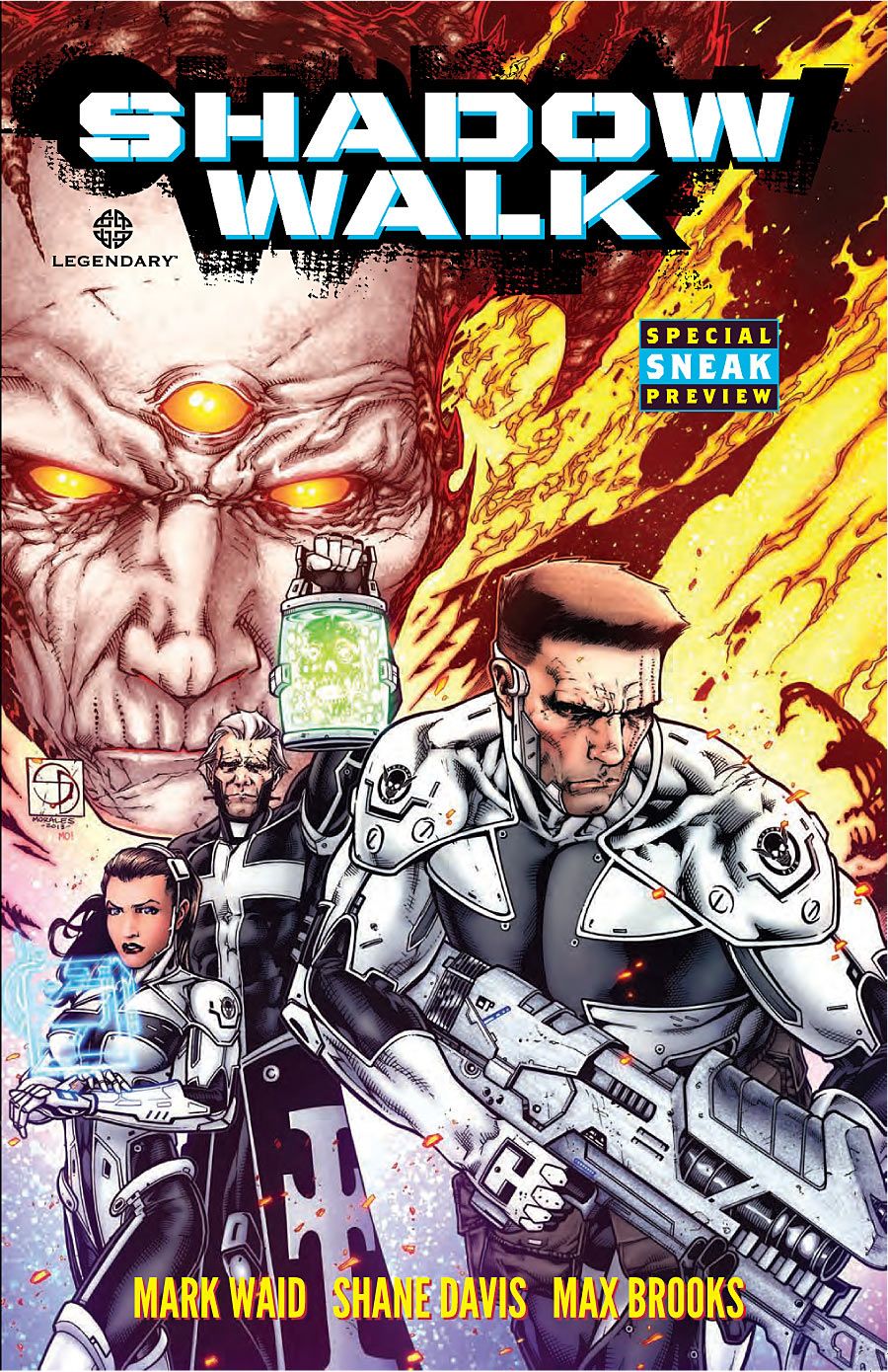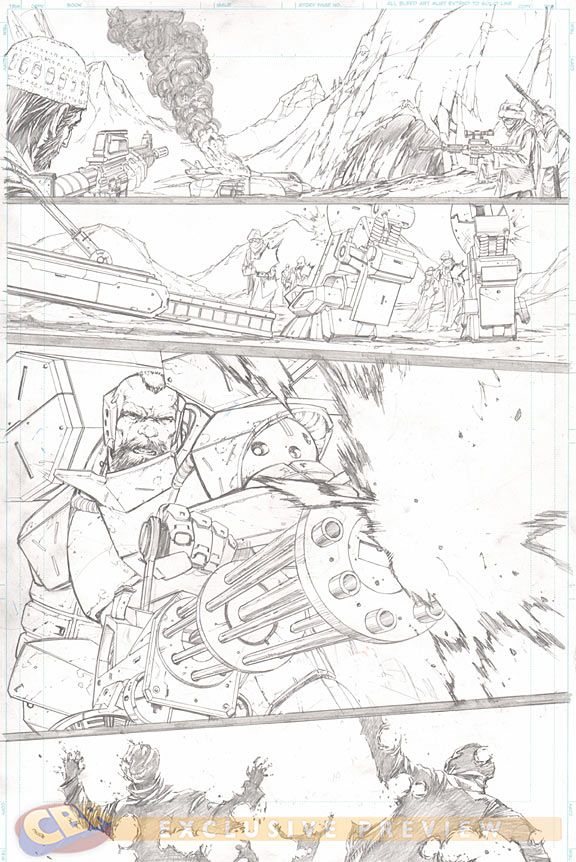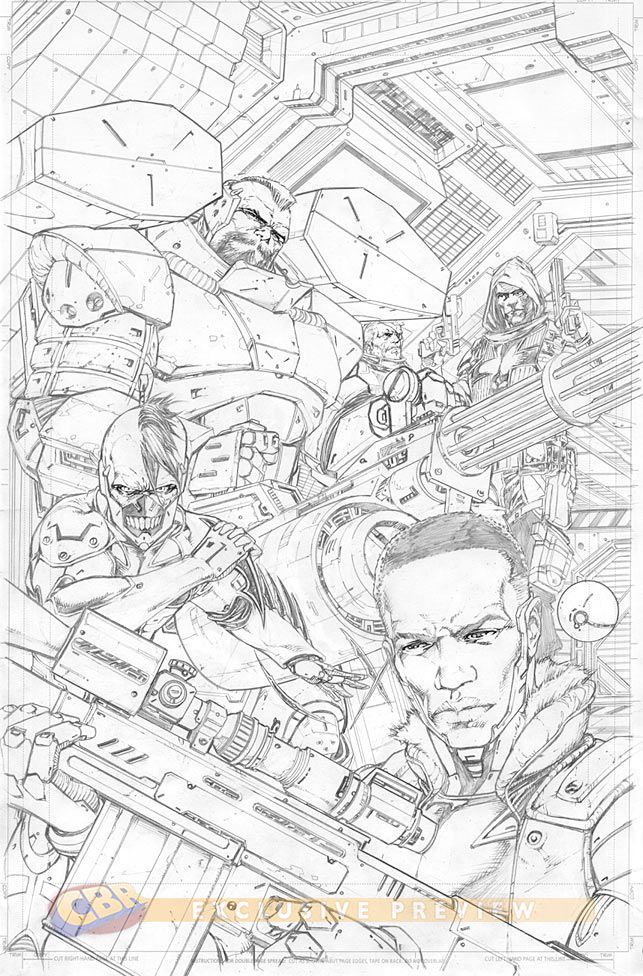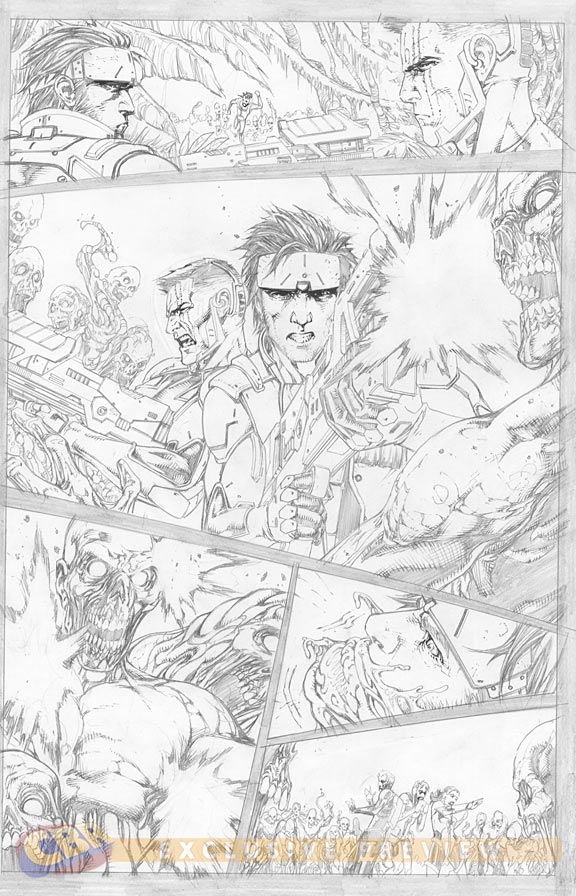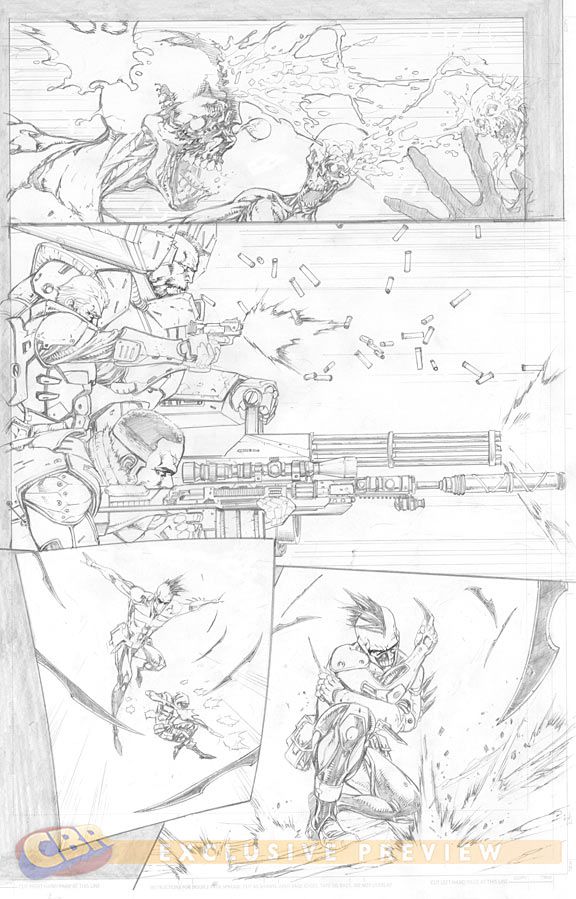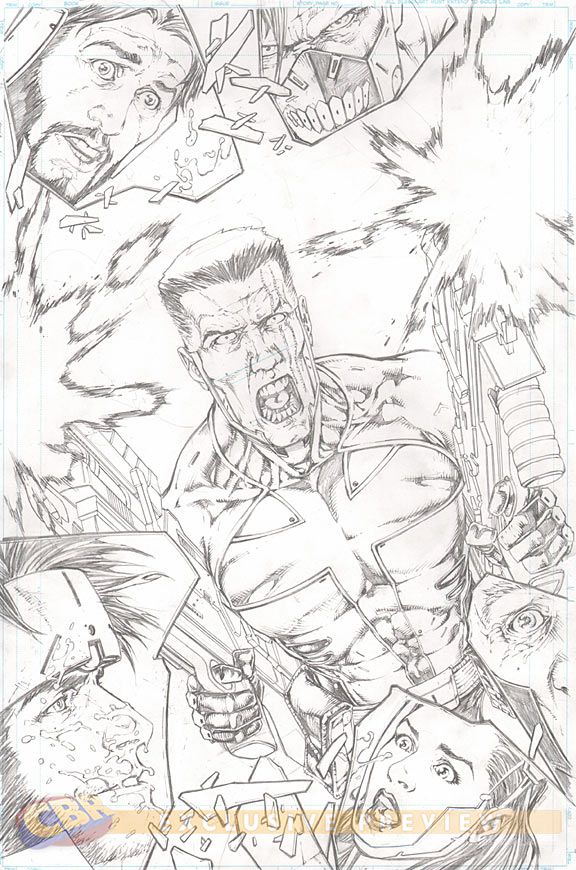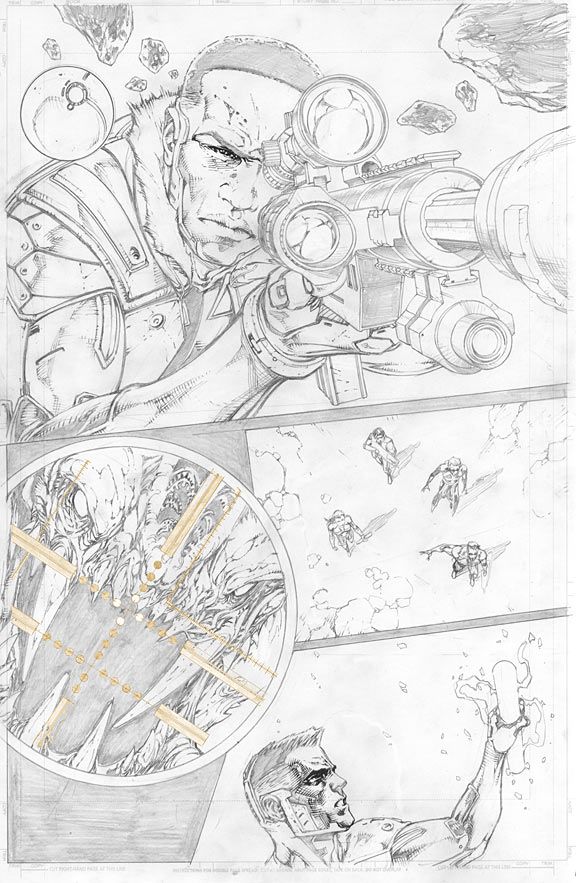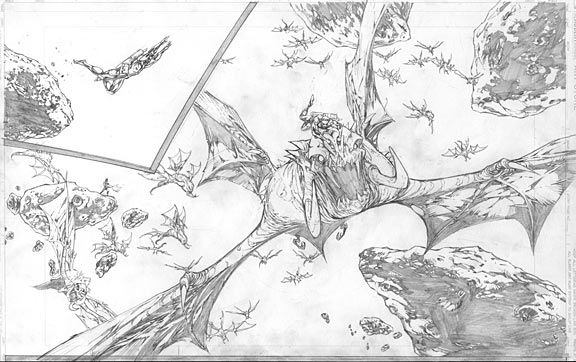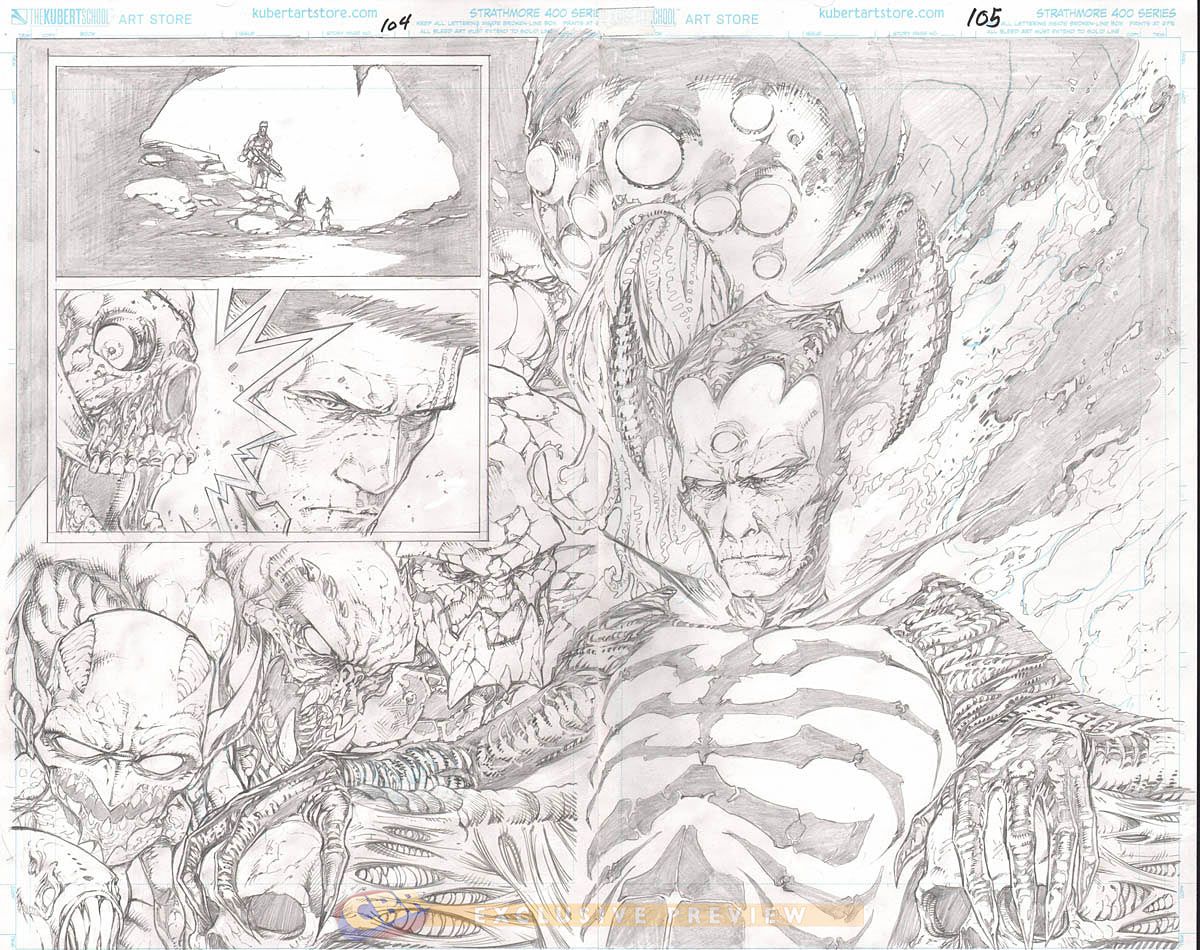"Even though I walk through the valley of the shadow of death, I fear no evil, for You are with me; Your rod and Your staff, they confront me." For some, that's an inspirational line from the Bible, Psalm 23:4, if you're curious. But for Mark Waid, Max Brooks, Thomas Tull and Shane Davis, it's an idea that inspired their new Legendary Comics graphic novel "Shadow Walk."
The book places the legendary Valley of the Shadow of Death in Iraq, a location that has seen its fair share of paranormal activity. In fact, the only person to ever survive the valley is John Raines, a soldier locked up in Guantanamo Bay until his government notices strange energy signatures coming from the place and re-enlists him to lead a team of experts -- including scientists and a priest -- to find out what exactly is going on.
Based on a concept by Legendary founder Thomas Tull, "Shadow Walk" was fleshed out thanks to a bible created by Max Brooks ("World War Z") and then scripted by Mark Waid with Shane Davis pencilling the project. To get an inside track on the graphic novel, which debuts on Nov. 27, CBR News talked with Davis about getting started on "Shadow Walk," designing the characters and the benefits of the graphic novel format.
CBR News: How did you first get involved with "Shadow Walk" and how far along was the story when you joined on?
Waid, Brooks & Davis Team for Legendary Comics' "Shadow Walk" OGN
Shane Davis: From talking with Mark Waid, Tull was interested in me coming aboard for the project. Very little was developed until I came on to the project. I think there was a beginning and an end. I was given a rough paragraph to look over. After reading it and knowing it was a great chance to work with Mark Waid, and of course Max Brooks being attached was great, we came up with an agreement and that was that.
It sounds like you were pretty involved with Tull, Waid and Brooks in the creative process, then.
Pretty closely involved in creating it, as not a lot was developed until I came along. Waid was concerned about the setting of the book being the same throughout, so I pitched the idea of climate suits and switching the environments up, giving us more diversity in settings and scenarios.
The basic five characters were conceived, then we felt a need to develop a military unit as chaperones. Right away, you can tell they were going to be the "red shirts" that die. But I felt it was still important to develop them and design them. I wanted to give them solid skill sets that made them of value to their survival, such as the human tank, sniper and magnetic knife specialist. I felt, depending on their strengths and losing them, that the mission would start to feel more grim as it goes along. Plus, with treating each of the characters as a "unique character," it was hard to see who was going to make it.
Then there were the demons and the need for multiple action scenarios that would need to break apart. Mark surprised me and asked my thoughts. I was unable to just spurt out ideas on the phone and I said, "Wait a minute, guys, let me sketch out some ideas tonight." The next day, I had developed multiple demons/scenarios, some action, some funerals. A few were obstacles. Waid wanted to work in some basic lore of zombie and vampire-type stuff. I widened that down to the basics and started building back up with insects or parasites in your brain and beautiful women that are a man's downfall. I really wanted this to feel fresh and new. I was quite honestly bored of just drawing a generic monster.
Mark Waid's Legendary "Shadow Walk"
Was the fact that you'd be able to help design this world from the ground up a big selling point for you as an artist?
Yes and no. Every artist wants to build a new world or interpret one. With the publishing options today, there have to be reasons for an artist to build something from the ground up. Being a creator today is different. Hindsight in the industry is always a factor. I was really excited about working with Mark and Thomas that it was very easy to be jazzed to create a world with them. We had plenty of phone conversations mapping the book out!
In addition to some supernatural elements, you're dealing with historical ones as well. How much research did you do to nail those scenes? Did Mark and the others offer any reference to help you out?
There is really only one scene that was historic and referenced. Actually, most of the religious/historical reference is really up to the artist's interpretations. All reference for the most part are other artist's renderings. A lot of the real world settings are referenced.
I also wanted each character to stand out. As an artist, it helps if you keep an actor in mind or an actor's attitude. [I did] a lot of gun action referencing. I like games, mainly monster shooters, but that really wasn't much help. I realized I had not drawn a shooting character right away. My career in comics had only showcased superhero action. I had not drawn that much gun play, or a team book. Luckily I had Joe Kubert as a teacher in school. I was aware of some story telling processes. I quickly started looking at old war comics and westerns. My big challenge with this book would be that it's an action/sci-fi/horror OGN. "Action" with only a few punches at the end. I had to rethink everything I knew about pages. Luckily I cleared a violence seal of approval right away! Not for all ages!
The main cast is pretty diverse, from a soldier and a priest to various scientists. How did you approach each of them differently from a design perspective?
With Tucker, our priest, I felt we had to carry the cloth throughout the book, so his Bio-suit is inverted in color to emulate a priest's garb. I feel that as a comic artist it is important that you depict the character's story. I really get into the heads of the characters I draw. You have to, in a way, when you consider you're showing the emotions and attitudes and gestures. Do the slouch, the smirk, moody and so on.
You also have to consider the character to the left and right. I had Raines and Judge, two completely different soldiers with different morals. Raines, the die hard, hard-boiled patriot. Judge the rebel, been-there-done-that. Soldiers all the same in battle. I loved playing these guys off of one anther. They contrast each other so well! Judge with the shaggy, unshaven out of service look. Raines never missed the clippers, horribly scared -- inside and out -- and does what his country asks.
They seem to wear a kind of uniform or costume on their mission. What was the design processes for that like?
The actually all have a basic body climate suit that gives them a push in physical performance. I designed the suit to emulate the basic cross on the medieval crusader chest. From there, after having the uniform connection, I diced them up. I developed the Rangers/military specialists. I know it wasn't practical, but I wanted each guy to have his "thing" that was unique. I wanted the big human tank that would be their heavy artillery and missile support. I wanted Davison, our sniper, to be a strong African American character. Sauvage, a knife specialist, I thought with all the guns that a guy throwing the blades that come back to the magnets in his hands would be cool. Bella, that was our female character, I didn't see her as a weak character even though she is a scientist without weapons. I also didn't feel it was appropriate to draw her as a T&A type.
What was the experience like working for Legendary?
It was fun drawing the stuff. It is definitely different. I'm the type of comics creator that I say I will do something, I follow through, and like to work with the same.
CBR TV: Mark Waid & Watt Wagner on Legendary Comics
When it came to designing some of the monsters and demons, did you look to old sketchbooks for inspiration or did they mostly come from thinking about this story in particular?
I loved "Guyver" and "Devil Man" as a kid. I always like humanoid monsters, but this stepped above and beyond that. I seem to have developed a style to my tech over the years, so that is just sort of there. I always try to keep my finger to the pulse of what's going on in Geek culture. I'm older now and am looking at a range of sci-fi from the past to today. What I noticed is that busier isn't always better. At the end of the day with all the art books and reference, I just draw the page. The designs are built for a comic, but I do keep in mind other mediums and outlets.
Much like "Superman: Earth One," "Shadow Walk" is a graphic novel. What are the pros and cons of working in that format?
An OGN is a superior storytelling medium when you have a good story to tell. It gives you time to set things up, you don't have to rush into action in the first 20 pages. With periodicals there seems to be a need to give people the main character doing their thing right away. You also are open to online judgement on the whole story before you have really gotten it going. "Shadow Walk" will be my third OGN and probably my last for the foreseeable future. I still think there are some unique storytelling tricks that nobody has taken advantage of with the format.
To see how Shane Davis, Mark Waid, Max Brooks and Thomas Tull took advantage of the graphic novel format, check out "Shadow Walk" on Nov. 27.


